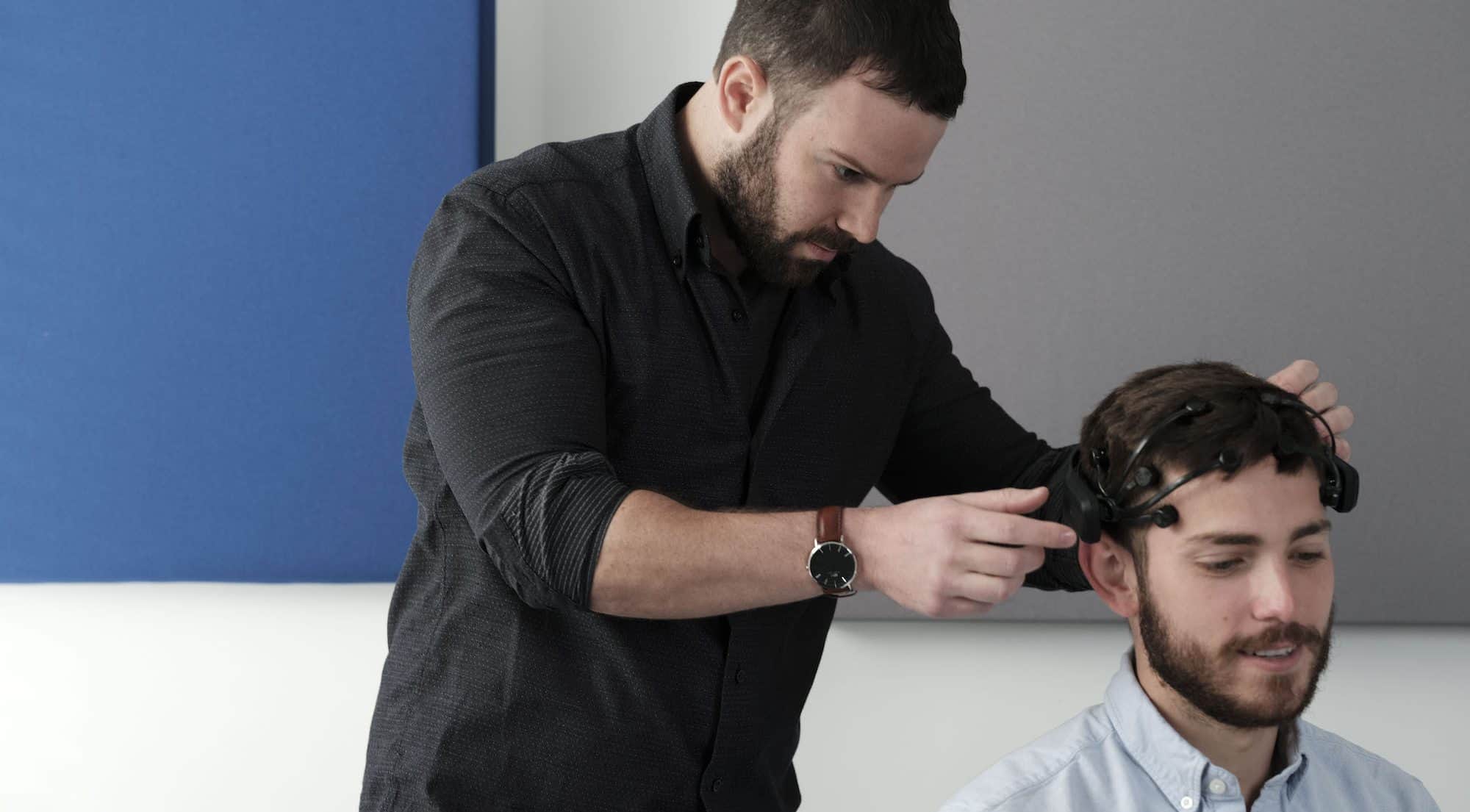Inside Spark Neuro’s futuristic neuroscience lab

A lot was running through my mind when they first hooked up my brain.
I’d heard about SPARK Neuro on Facebook and done a little digging to find out what exactly I’d have to do to earn “$75 in 75 minutes.” It all sounded pretty easy: watch a video while they measured your brain, and make a little spending money. Besides, how many people could say they’d been in a neuroscience research study?
It wasn’t until I was already in the elevator that I stumbled across the phrase “tapping into the subconscious” on their website, and immediately started to wonder whether they’d be reading my mind as well as my emotional response to some TV commercials. I didn’t wonder long before the doors opened and I saw the lab, which looked like a slightly darker version of the computer room of a library, albeit with a much friendlier-looking reference librarian at the front desk. She waved me in through the glass door and asked for my name, while a lab tech tiptoed across the carpet and guided me to a pretty comfy tv-watching chair, all things considered.
Then the helmet came out.
“Today we’re running what’s called an electroencephalogram, or EEG, test to measure your neurological activity while you watch video content,” the tech informed me. Sensing my apprehension, he added “It’s non-invasive, you just wear this headset to measure your brain’s electrical signals from the outside.” The thing looked a little like the Professor’s helmet from X-Men, and once the dime-sized felt pads warmed up a bit, I forgot I was wearing it.
Next the lab tech wrapped velcro rings around two of my fingers, attached a heart rate-sensing plastic clip to my earlobe, and handed me a pair of earbuds. He clicked through to a screen with a color-coded reading from each region of my brain, and adjusted a sensor until one more region appeared. The squiggles moving across the screen settled into a regular rhythm, jumping higher when the tech asked me to try biting down, and lower when he asked me to blink.
“All set,” he said, and I breathed a sigh of relief: no probes or needles.
It was all smooth sailing from there—a joke you’ll get once you’ve seen the first 5-minute video of water lapping up on a tropical island. I watched about 30 more minutes of content, which were actually kind of entertaining, and then the technician came back to turn off the monitor. As he closed out the video, I caught one last glimpse of my brain activity graph and felt weirdly sentimental about it as he took off my gear.
Twenty minutes later I’d filled out a quick survey, given them my Paypal email, and taken a selfie with my psychic mutant hat. As I walked down into the subway, though, my mind was somewhere else. I kept thinking, look at all these brains walking around, and wondered whether my own would go unexamined from now on. Whether the electrical signals had spiked when I just barely made it to the train, and which neurons would come to life eating a slice of pizza or watching a movie.
Every brain on the train, I remember thinking, was just waiting to be studied.
Two months later I started writing this blog, and later this week, much to my delight, I’ll be plugged in once again for one of their many studies. It’s easy money for sure: comfortable chair, comfortable headset. All in all it’s pretty much getting paid to watch TV. But even more interesting than the video were the brain squiggles moving in the background, which I still think about sometimes as I watch movies at home. The same neurons are performing 24/7, awake or asleep, tuned in or tuned out, and it’s kind of exciting to think you can go in and get them recorded every now and then.
